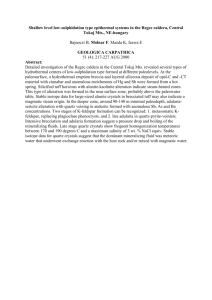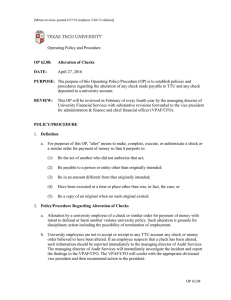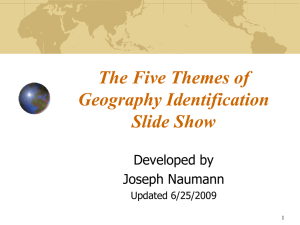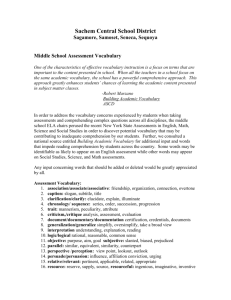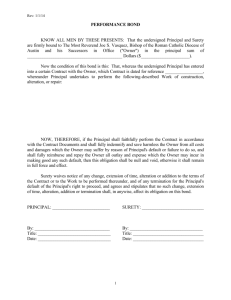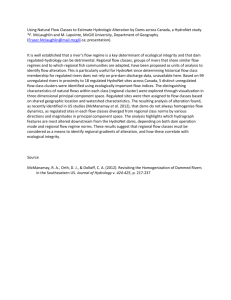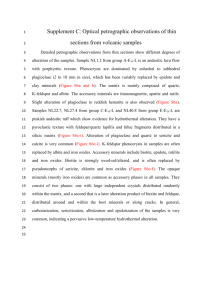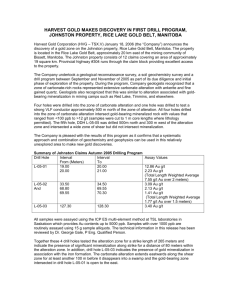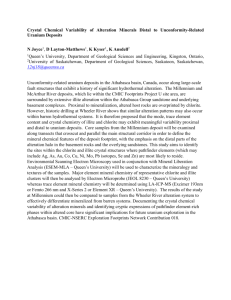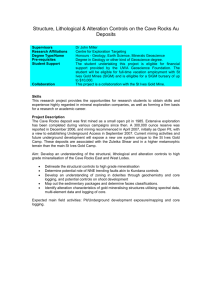Gaillard
advertisement
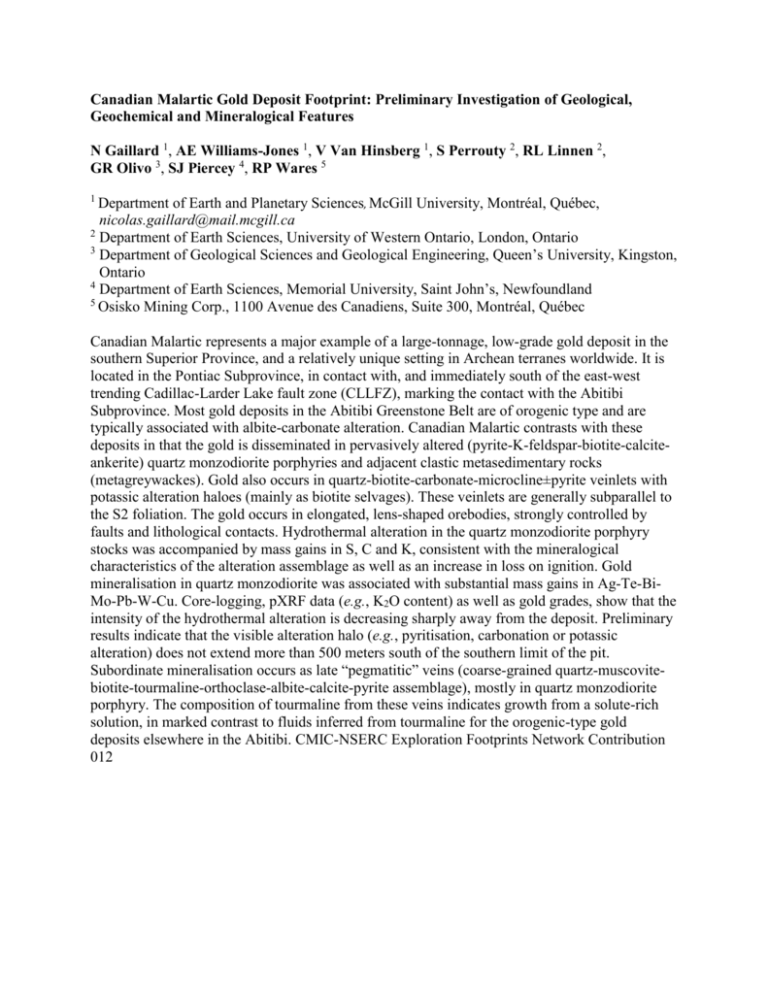
Canadian Malartic Gold Deposit Footprint: Preliminary Investigation of Geological, Geochemical and Mineralogical Features N Gaillard 1, AE Williams-Jones 1, V Van Hinsberg 1, S Perrouty 2, RL Linnen 2, GR Olivo 3, SJ Piercey 4, RP Wares 5 1 Department of Earth and Planetary Sciences, McGill University, Montréal, Québec, nicolas.gaillard@mail.mcgill.ca 2 Department of Earth Sciences, University of Western Ontario, London, Ontario 3 Department of Geological Sciences and Geological Engineering, Queen’s University, Kingston, Ontario 4 Department of Earth Sciences, Memorial University, Saint John’s, Newfoundland 5 Osisko Mining Corp., 1100 Avenue des Canadiens, Suite 300, Montréal, Québec Canadian Malartic represents a major example of a large-tonnage, low-grade gold deposit in the southern Superior Province, and a relatively unique setting in Archean terranes worldwide. It is located in the Pontiac Subprovince, in contact with, and immediately south of the east-west trending Cadillac-Larder Lake fault zone (CLLFZ), marking the contact with the Abitibi Subprovince. Most gold deposits in the Abitibi Greenstone Belt are of orogenic type and are typically associated with albite-carbonate alteration. Canadian Malartic contrasts with these deposits in that the gold is disseminated in pervasively altered (pyrite-K-feldspar-biotite-calciteankerite) quartz monzodiorite porphyries and adjacent clastic metasedimentary rocks (metagreywackes). Gold also occurs in quartz-biotite-carbonate-microcline±pyrite veinlets with potassic alteration haloes (mainly as biotite selvages). These veinlets are generally subparallel to the S2 foliation. The gold occurs in elongated, lens-shaped orebodies, strongly controlled by faults and lithological contacts. Hydrothermal alteration in the quartz monzodiorite porphyry stocks was accompanied by mass gains in S, C and K, consistent with the mineralogical characteristics of the alteration assemblage as well as an increase in loss on ignition. Gold mineralisation in quartz monzodiorite was associated with substantial mass gains in Ag-Te-BiMo-Pb-W-Cu. Core-logging, pXRF data (e.g., K2O content) as well as gold grades, show that the intensity of the hydrothermal alteration is decreasing sharply away from the deposit. Preliminary results indicate that the visible alteration halo (e.g., pyritisation, carbonation or potassic alteration) does not extend more than 500 meters south of the southern limit of the pit. Subordinate mineralisation occurs as late “pegmatitic” veins (coarse-grained quartz-muscovitebiotite-tourmaline-orthoclase-albite-calcite-pyrite assemblage), mostly in quartz monzodiorite porphyry. The composition of tourmaline from these veins indicates growth from a solute-rich solution, in marked contrast to fluids inferred from tourmaline for the orogenic-type gold deposits elsewhere in the Abitibi. CMIC-NSERC Exploration Footprints Network Contribution 012


